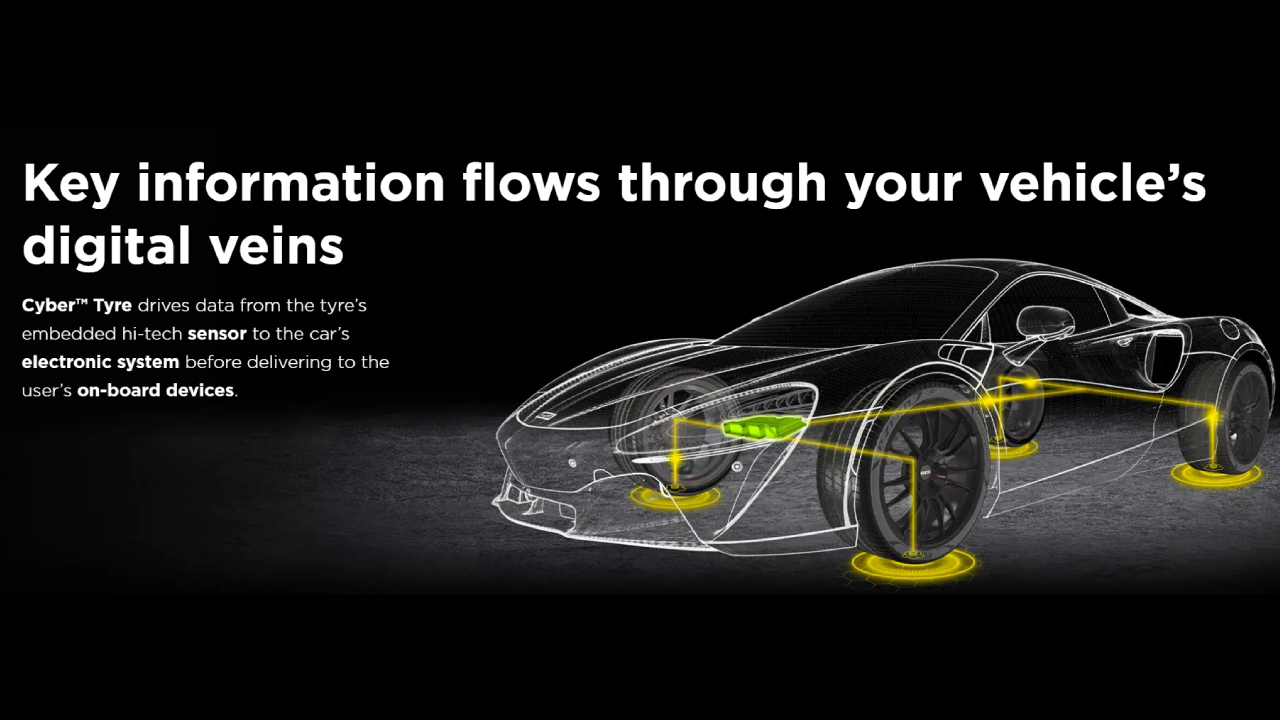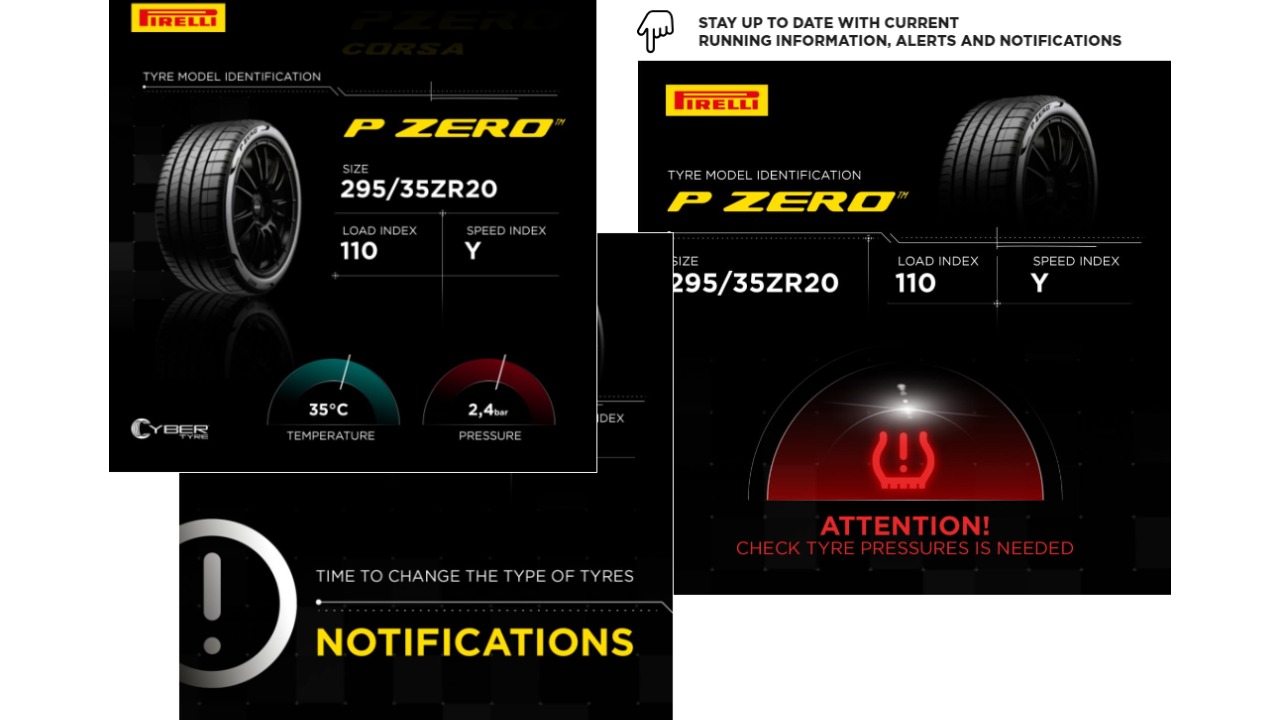The automotive industry is ever-evolving, continually pushing boundaries to enhance performance, safety, and the overall driving experience. One of the latest innovations in this regard is Pirelli’s groundbreaking tyre technology, aptly named the Cyber Tyre. Equipped with advanced sensors and deep integration into a vehicle’s electronic systems, these intelligent tyres promise to take road safety, handling, and vehicle dynamics to a new level.
The evolution of this technology is the result of a collaboration between Pirelli and Bosch, two leaders in automotive innovation, and it’s positioned to change how drivers interact with their vehicles—especially as we move towards autonomous cars and smart driving solutions.
In this article, we’ll explore the technological prowess of Pirelli’s new Cyber Tyres, their role in enhancing vehicle performance, and their implications for the future of driving. This tyre isn’t just rubber hitting the road; it’s an intelligent entity capable of analyzing conditions and communicating vital data back to a vehicle’s Electronic Control Unit (ECU). Let’s delve into the fascinating capabilities of these tyres and their potential impact on the automotive landscape.
Table of Contents
The Evolution of Tyre Technology: From Passive to Smart Solutions
Traditionally, tyres have been passive components. They were crucial to providing traction, supporting weight, absorbing road shocks, and transmitting braking and acceleration forces. While their designs and materials have evolved to better handle high speeds, cornering forces, and diverse weather conditions, their role has remained largely unchanged: being the intermediary between the vehicle and the road.
However, in recent years, the automotive industry has witnessed a significant shift. Vehicles are becoming more intelligent, interconnected, and increasingly dependent on sensors and advanced control systems. This has paved the way for the concept of smart tyres, which are equipped with sensors to provide real-time data about road conditions, tyre health, and vehicle performance.
Pirelli’s Cyber Tyre technology represents a huge leap from earlier smart tyre efforts. First launched on the McLaren Artura in 2021 and later featured on the Pagani Utopia Roadster, these tyres are embedded with Bosch’s Microelectromechanical Systems (MEMS) sensors that can measure key parameters like pressure, temperature, and acceleration. This information is not just collected—it’s also processed and communicated to the vehicle’s systems, making the tyres an integral part of the car’s decision-making process.

The Core Technology Behind Cyber Tyres
The Bosch MEMS sensor is at the core of the Cyber Tyre. This tiny device, attached to the inner wall of the tyre, is powerful enough to gather crucial data that can influence a car’s handling and safety. The sensor measures key variables like:
- Pressure: Monitoring tyre pressure is crucial for optimal handling and fuel efficiency. Underinflated or overinflated tyres can cause poor fuel economy, uneven wear, and safety hazards. The Cyber Tyre continuously measures and reports pressure levels.
- Temperature: Tyre temperature is a critical factor, especially in performance vehicles. If tyres become too hot, they can lose traction and may degrade faster. On the other hand, tyres that are too cold may not provide adequate grip. The sensor provides continuous temperature feedback to ensure tyres operate within the optimal range.
- Acceleration: Acceleration data can reveal the forces acting on the tyre in real-time, which helps in assessing the overall health and performance of the tyre and vehicle dynamics.
This real-time data is transmitted to the Electronic Control Unit (ECU), which is essentially the brain of the vehicle. The ECU analyzes the data and adjusts various car systems, such as the Electronic Stability Programme (ESP), Anti-lock Braking System (ABS), and Traction Control System (TCS), to ensure the car is operating safely and effectively.
Enhancing Safety and Performance
The Pagani Utopia Roadster is an example of how Cyber Tyres can integrate seamlessly into a high-performance vehicle. In the case of the Utopia, the data collected by the tyre sensors is fed directly to the ESP, allowing for adjustments to be made to the vehicle’s stability in real-time. The result is a car that handles better, especially when road conditions are less than ideal.
One of the primary advantages of these tyres is their ability to make a vehicle more responsive to changing conditions. For instance, if the sensors detect that the tyre temperature has exceeded optimal levels, the system can inform the driver, enabling adjustments to driving style to cool the tyres down. Conversely, if the tyres are too cold, the system can recommend a more aggressive driving style to bring them up to the optimal temperature range.
Beyond temperature and pressure, acceleration data allows the vehicle to understand how forces are being distributed across the tyres. This information can be used to optimize suspension settings, ensuring better grip and improved handling in dynamic driving situations. The real-time nature of this data means that the vehicle is always equipped to respond to changes in driving conditions, enhancing both safety and performance.
Real-World Benefits: Smarter, Safer, and More Efficient

The Cyber Tyre represents more than just an incremental improvement in tyre technology—it has the potential to transform how drivers interact with their vehicles. Here are some of the key benefits:
Enhanced Safety
One of the most significant advantages of the Cyber Tyre is its contribution to vehicle safety. By providing real-time data about tyre conditions, the technology helps ensure that the vehicle always maintains optimal traction. In situations where the tyre pressure is too low or the temperature is too high, the ECU can prompt the driver to take corrective action, reducing the risk of accidents. The advanced sensors also help in anticipating and mitigating loss of traction, which can be particularly useful on wet or icy roads.
Improved Performance
The integration of tyre sensors into the vehicle’s ECU allows the car to make adjustments in real-time to optimize performance. For example, data about tyre pressure and temperature can help adjust suspension and braking settings, ensuring that the vehicle is always performing at its best. This is particularly beneficial for high-performance vehicles like the Pagani Utopia, where even the smallest adjustment can have a significant impact on overall handling.
Fuel Efficiency
Maintaining optimal tyre pressure is crucial for fuel efficiency. Underinflated tyres can increase rolling resistance, leading to higher fuel consumption. With the Cyber Tyre, the system is always aware of the tyre pressure and can prompt the driver to take corrective action, ensuring that the vehicle is always operating as efficiently as possible.
Seamless Interaction with Autonomous Driving Systems
As we move closer to a future dominated by autonomous vehicles, technologies like the Cyber Tyre will play a crucial role in ensuring safety and performance. In a fully autonomous car, the tyres will be responsible for communicating changes in road conditions to the vehicle’s control systems. For instance, if the tyre sensors detect a change in road surface, such as moving from dry pavement to a wet surface, the vehicle will be able to adjust its speed and stability controls accordingly. This level of real-time adaptation is essential for the safety of self-driving vehicles.
Moving Towards Fully Autonomous Driving
The future of driving is set to be increasingly autonomous, and tyre technology like Pirelli’s Cyber Tyre will be instrumental in making this transition safe and seamless. As cars become capable of driving themselves, they will require sensors that can provide a comprehensive picture of the driving environment. The tyres, being the only part of the vehicle in direct contact with the road, are uniquely positioned to provide this data.
The Cyber Tyre’s sensors can alert the vehicle to changes in weather, road surface, and tyre condition, enabling the autonomous system to make split-second decisions. This will be particularly important in mixed-weather environments, where roads can transition from dry to wet in a matter of minutes. Unlike human drivers, who can see changes in the weather and adjust accordingly, an autonomous vehicle will rely on sensors like the ones in Cyber Tyres to detect these changes and respond appropriately.
Another important aspect is vehicle-to-vehicle (V2V) and vehicle-to-infrastructure (V2I) communication. In the future, Cyber Tyres could be integrated into these communication systems, providing data not just to the vehicle’s ECU, but also to other vehicles on the road and to smart road infrastructure. For instance, if a car equipped with Cyber Tyres detects a patch of ice, it could communicate this information to other cars in the vicinity, alerting them to the danger. This kind of real-time data sharing will be crucial for reducing accidents and improving traffic flow in a world of autonomous vehicles.
